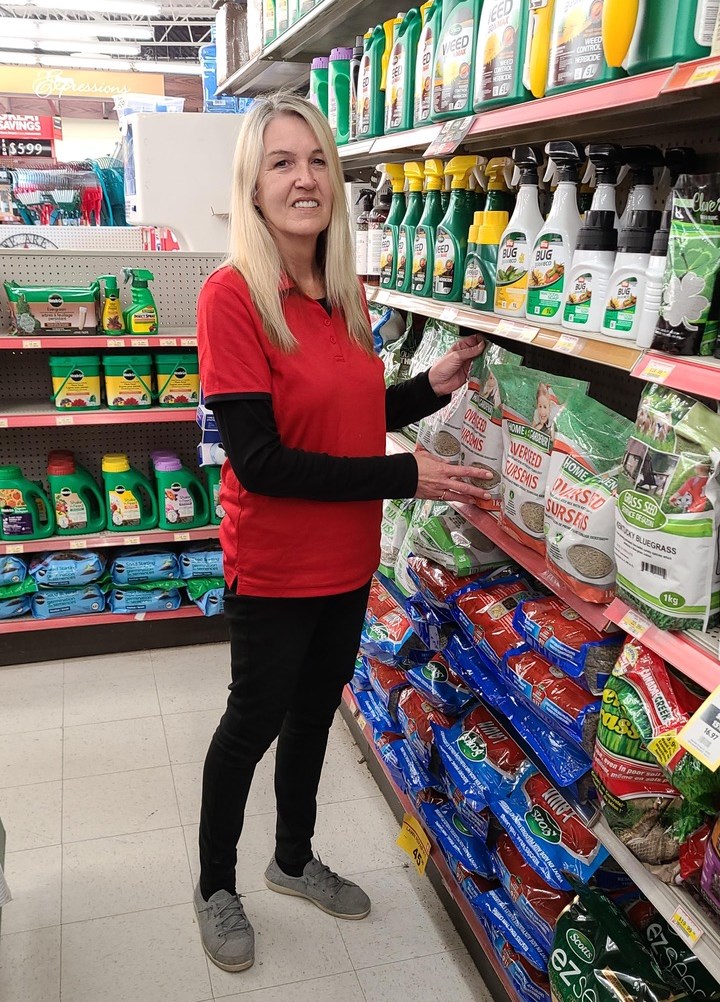As summer winds down it’s time to start thinking about protecting your lawn and garden over the cooler months.
To help, we spoke to Melanie at JL’s Home Hardware Building Centre in Guelph, to get her top 5 suggestions on what to do—and why it’s important.
1. Fertilizing in the fall: Why it’s a must
By the time the end of summer rolls around, many of our lawns have seen better days. The most common reasons? Weeds, drought, insects or disease, which explain why grass often tends to be so thin, dry and patchy this time of year.
Fertilization helps get your lawn back into shape and in the Fall, there are two periods that are ideal for application: an early one done in mid-August to mid-September and a later one usually in mid-to-late October. If your lawn is in really bad shape, you may also want to overseed.
As long as you have fertilized your lawn at least 2-3 weeks before the ground freezes, you should be okay. Look for nitrogen and potash as key ingredients in the product you choose. Giving your lawn some fall lawn food should help prevent winter damage and will strengthen it for spring.
2. Protecting your plants and shrubs
However hardy your plants and shrubs may seem, don’t leave them exposed to the elements all winter long.
Think about the iciest, windiest, sub-zero days or the heaviest snowfalls that cause even the sturdiest branches to droop. Unless you take steps to protect your plants and shrubs, you risk the harsh winter weather damaging them to the point that they may not rebound. Instead, purchase relatively inexpensive winter shrub protection covers, tree ties, burlap wrap, zip-up tree protectors, protector wraps and evergreen winter wraps to help them survive the season.
3. Pruning
By the time we hit October you can prune almost any plant without having to worry too much about damaging it. It’s a particularly great time to cut back woody plants, such as boxwood, junipers, yews and cedar hedges. You can also prune any shrubs that flower in the fall—just stay away from those that bloom in the spring; believe it or not, many of these already have young buds forming and you don’t want to cut off any of those.
Keep in mind that by no means do you need to cut everything back. Think about your garden in the winter and how it can retain some interest. Certain sturdier flowering plants can survive the winter just fine and will even attract songbirds, bringing life to your garden.
4. Leaf blowers
We all love to soak in the autumn colours and hear the crunch of fallen leaves beneath our feet—but raking and bagging all those leaves is another story.
It can be a massive job, depending on the size of your property and your trees. While it certainly doesn’t hurt to leave at least some leaves on your lawn as mulch for the soil (they can help to stop the growth of weeds), there’s a limit to how much can be left behind.
For the rest, Melanie suggests investing in a leaf blower. Choose from cordless, electric, gas and lithium-ion-powered.
5. AC covers
Lastly, don’t forget to cover your home’s air conditioning unit.
Covers come in square and round shapes—there are versions specifically meant for window air conditioners too—and they are quite affordable to buy. While most units are made to withstand tough winters, many homeowners feel more comfortable knowing that there is at least a bit of a barrier protecting it from the snow, ice and accumulation of debris such as sticks and leaves.
For more information about lawn and garden care year-round, visit JL’s Home Hardware Building Centre or call 519-822-8230.
